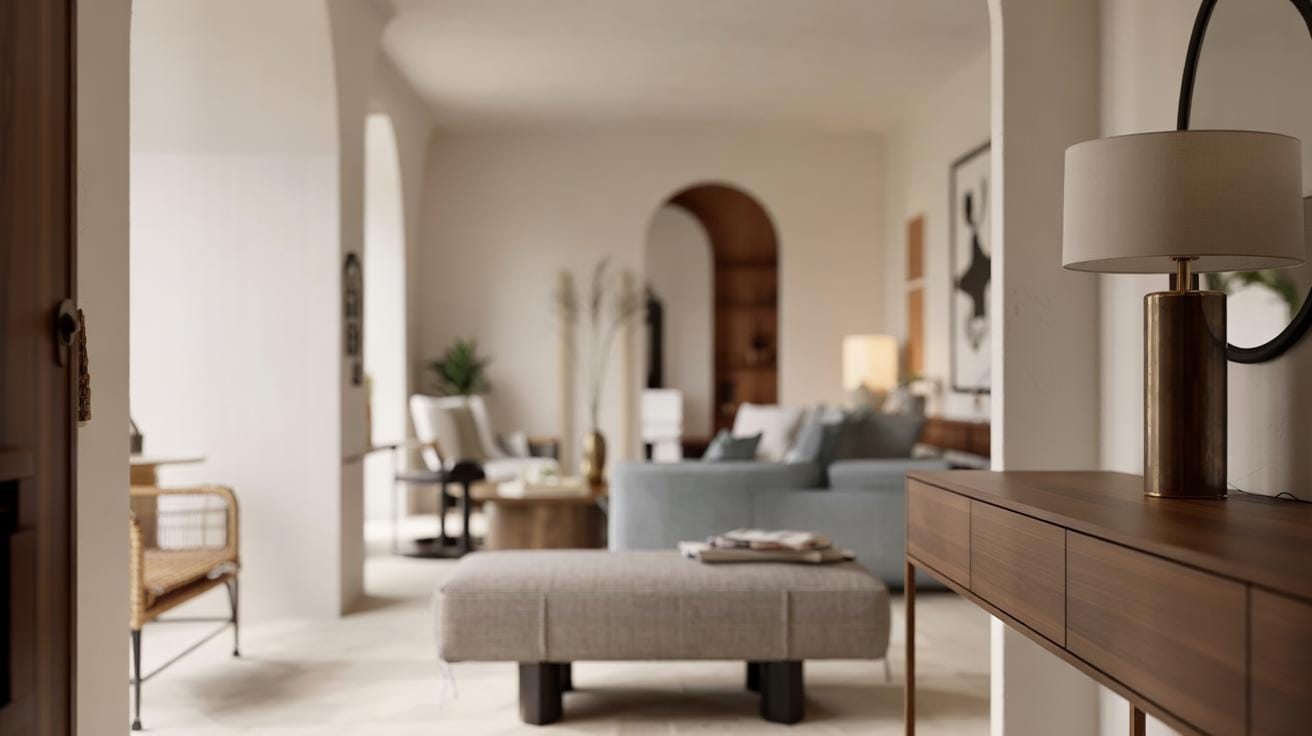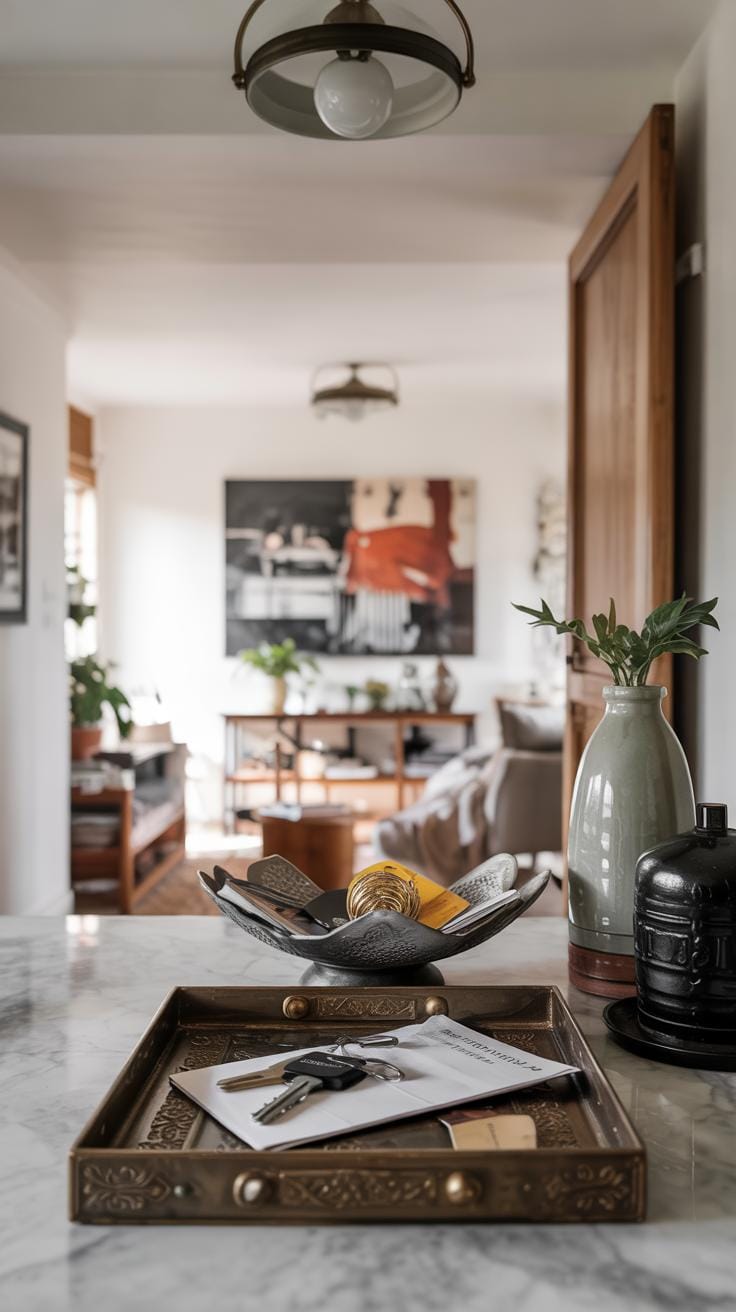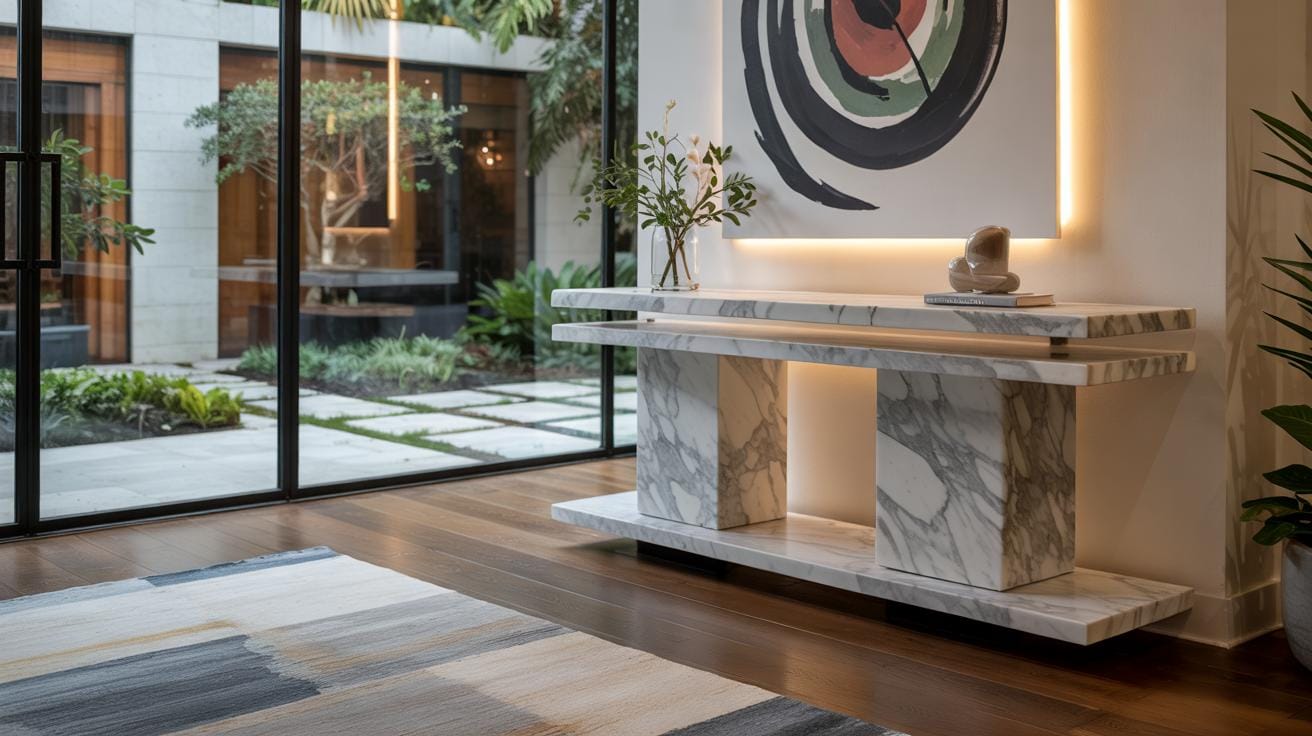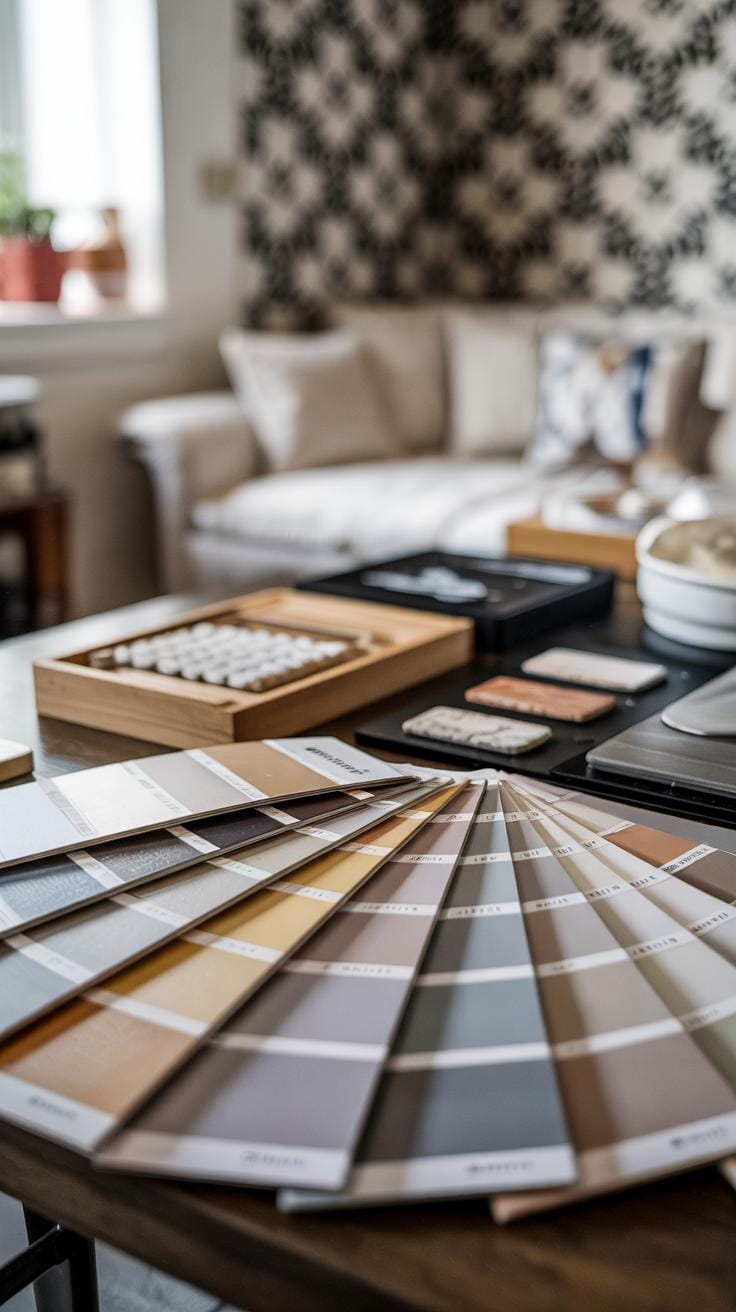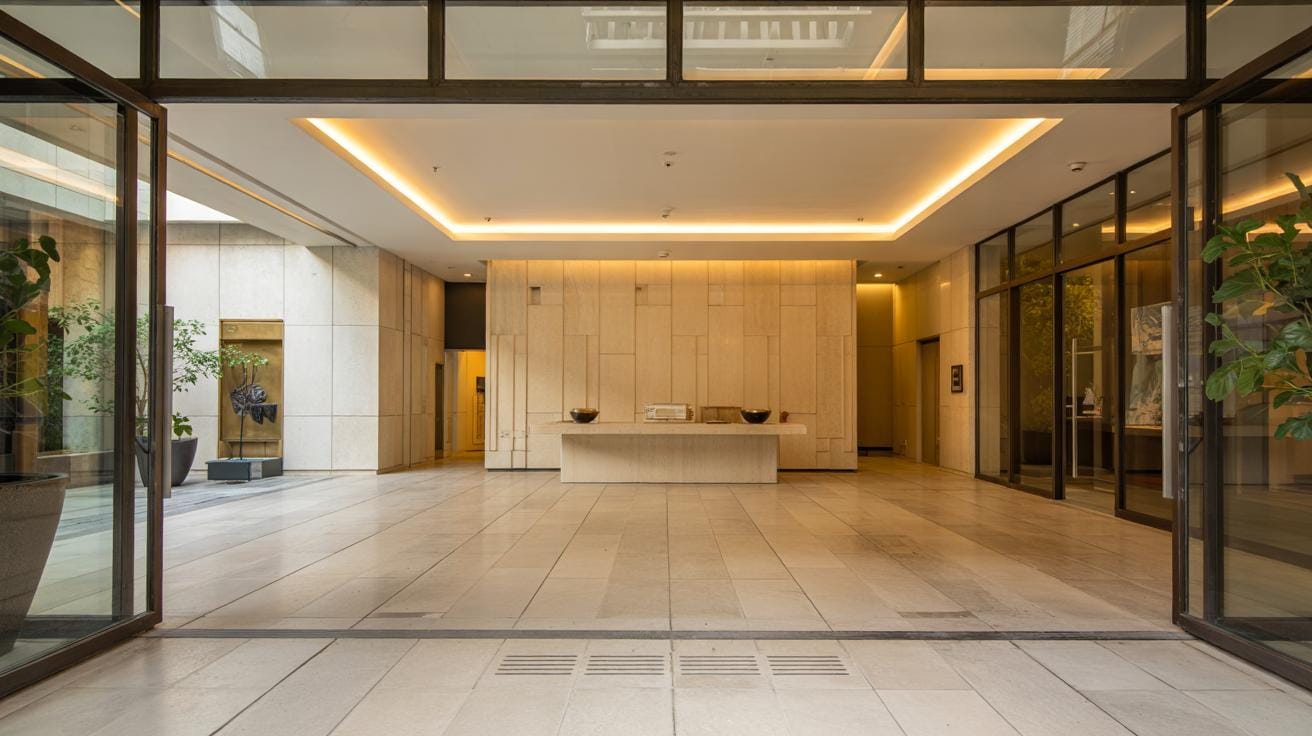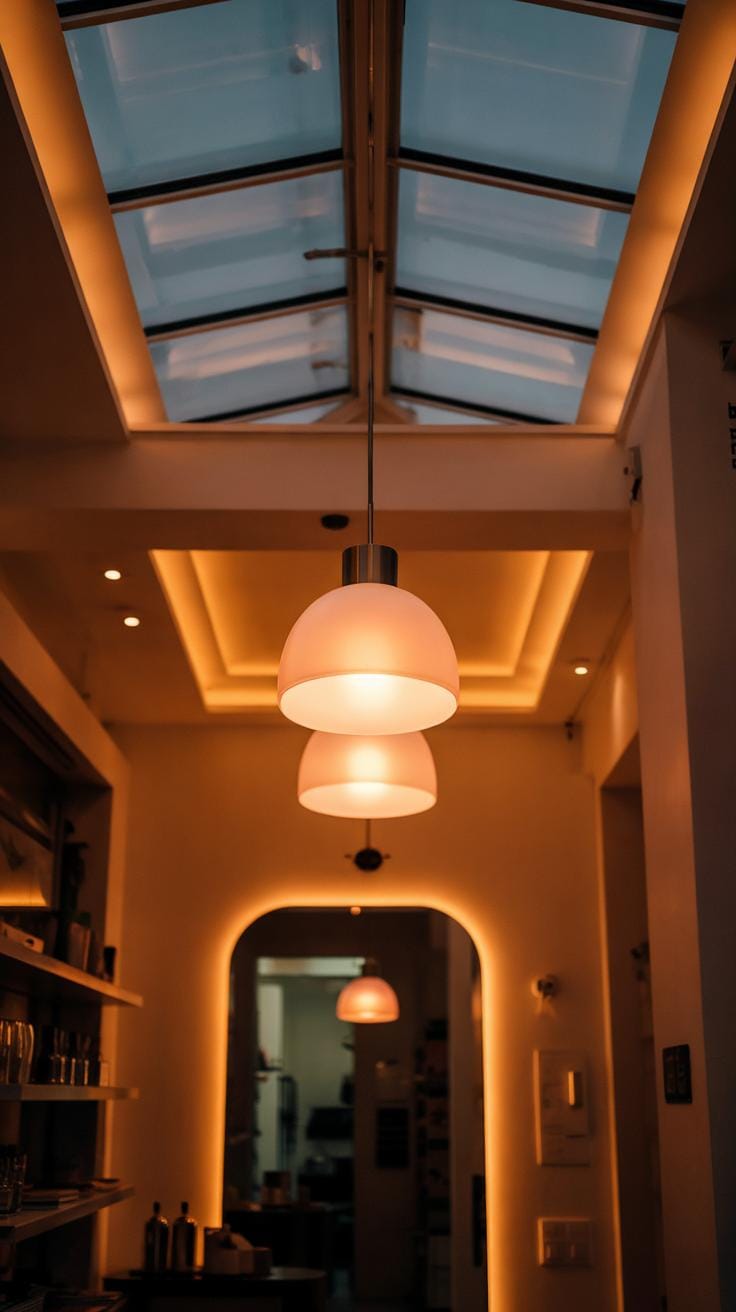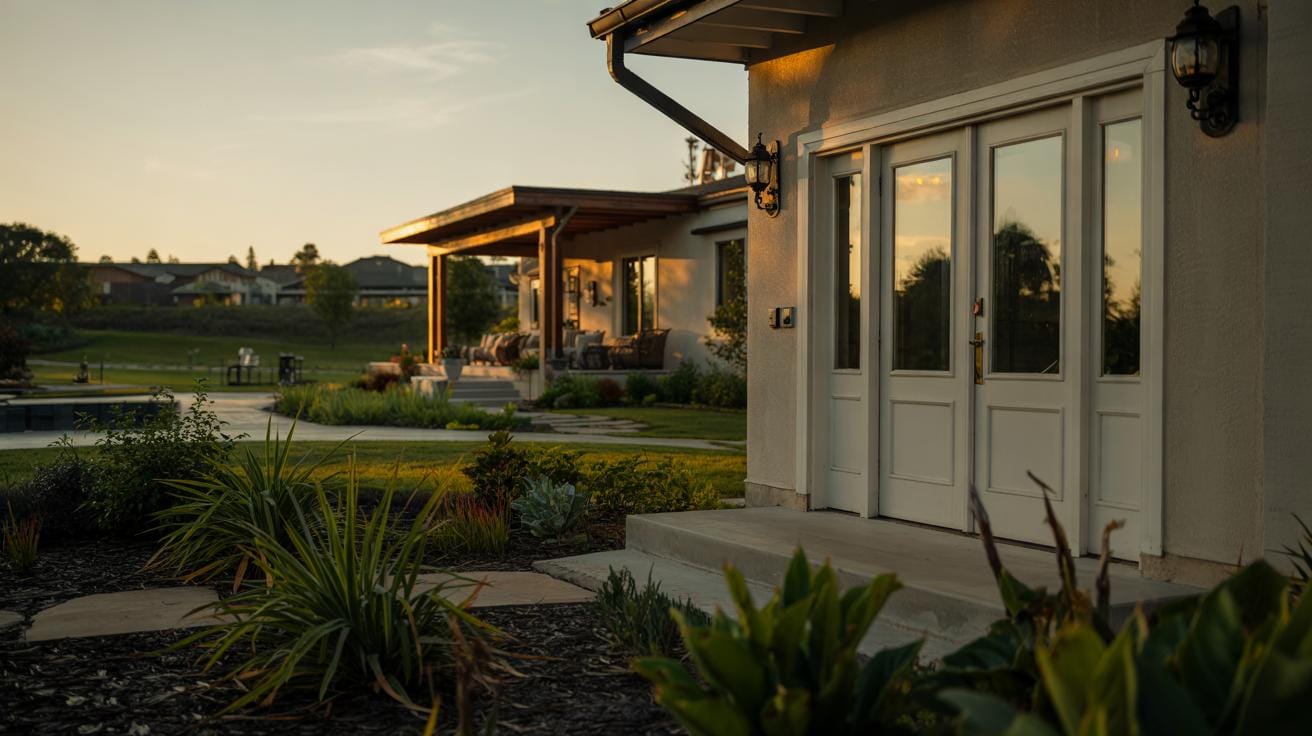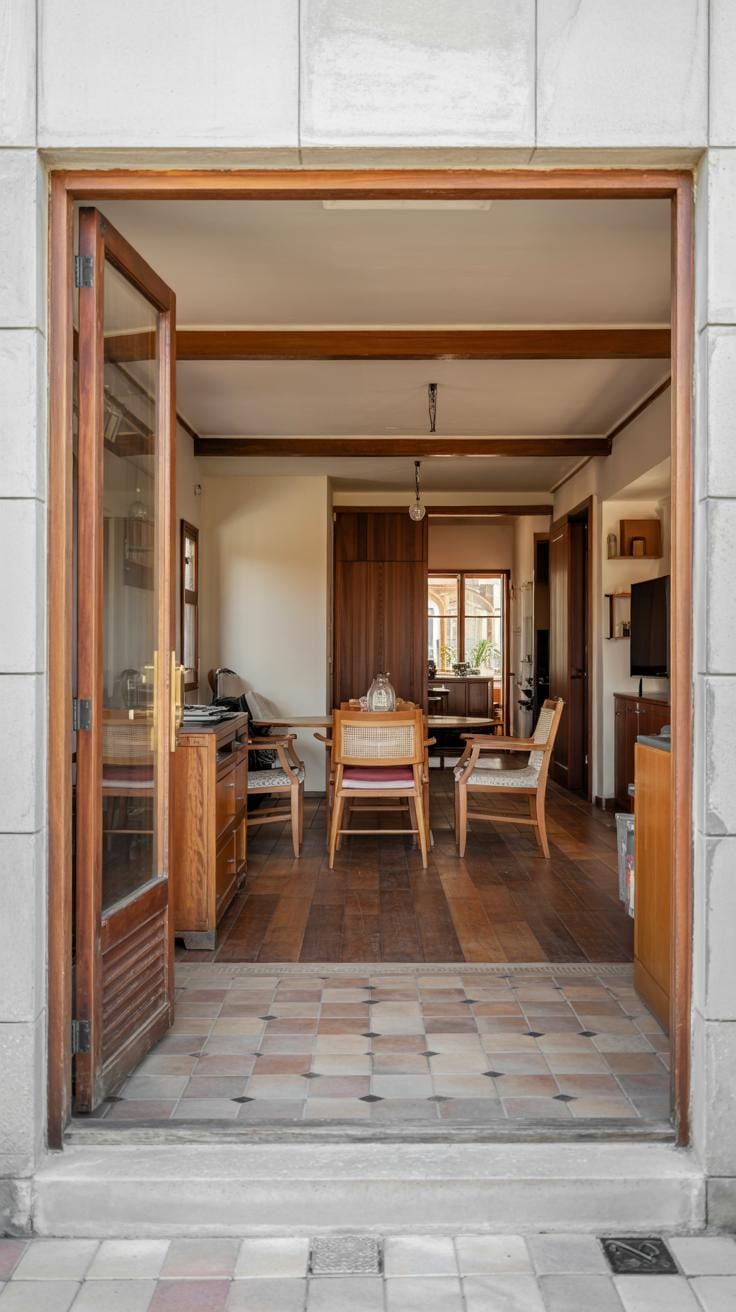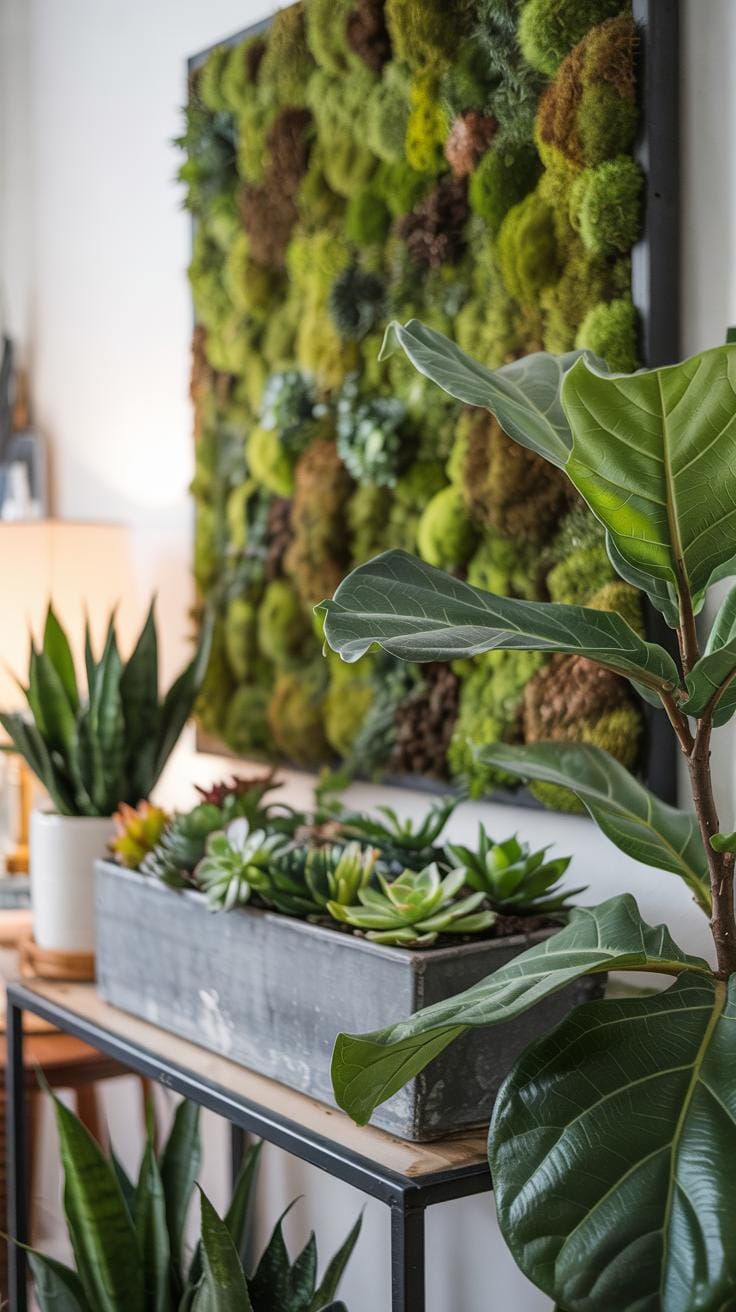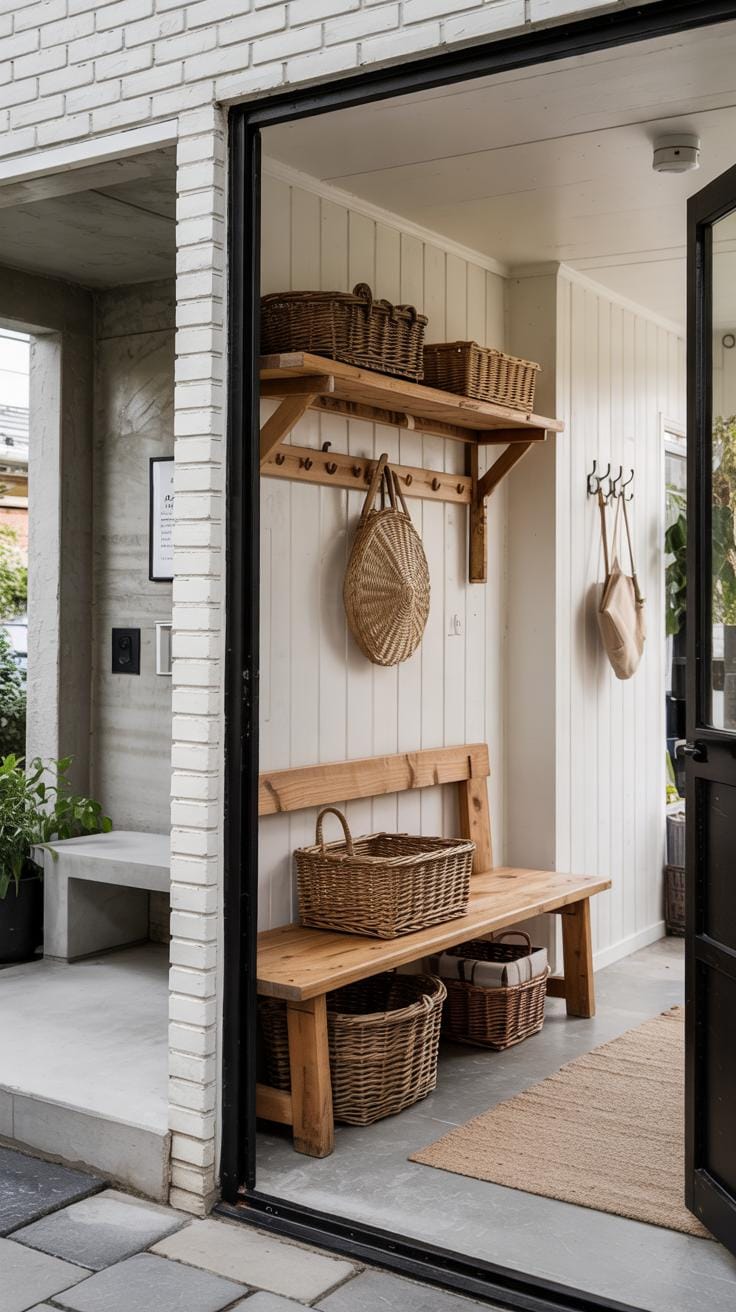Introduction
Entryways set the tone for the entire home. When you design this space well, it creates a sense of welcome and organized flow. Your entrance is more than a doorway; it marks the transition from the outside world to your private space. Focusing on practical design choices here influences how your living areas connect visually and functionally. Small details can make a big difference in turning your entryway into a functional and stylish area.
You might wonder how to balance aesthetics with utility in your entryway. What features make the most impact without crowding the space? A cohesive interior starts with the right entryway design that complements the style of your home’s interior. This article covers key concepts to help you plan an entrance that feels integrated and inviting. You’ll find ideas to improve flow, storage, lighting, and more while maintaining a unified look throughout your home.
Understanding the Role of an Entryway in Interior Design
An entryway is more than just a doorway; it sets the framework for your home’s feel and flow.
It serves as a bridge between the outside world and your private space. When you design this area thoughtfully, it helps create a seamless link to the rest of your home.
How does a well-organized entryway affect your daily routine? It offers practical benefits like storage and organization while also shaping your guests’ experience from the moment they step in.
Psychologically, a clear and inviting entrance lowers stress by providing order and calm before entering busier rooms. When the entryway reflects your home’s style, it supports cohesion and a balanced environment throughout your space.
Entryways as Transition Spaces
Your entryway acts as the frontline between the outdoor environment and your interiors. It changes how you move and see your home.
This space prepares you and your guests for what lies beyond the door. The design should smoothly connect to adjacent rooms in both function and style.
Did you notice how some homes flow effortlessly from the entry into living areas? This happens when colors, materials, and lighting in the entry complement those inside. Visual and physical transitions shape the home’s overall harmony.
Setting the Tone for Your Home
The entrance is your home’s handshake. It introduces your personal style and influences how people feel about your entire space.
Choosing design elements here is a chance to reflect your home’s theme early on. For example, if your home follows a modern style, sleek furniture and minimalist decor in the entry will signal this clearly.
Think about the impression you want to leave when someone walks in. Does your entry invite calm, energy, or warmth? Your choices here guide expectations for what’s to come inside.
Choosing Colors and Materials for a Unified Look
Selecting colors and materials for your entryway influences how well it connects with the rest of your home. Choose colors that echo the tones in adjoining spaces to create a natural flow. Consider the mood you want to set; soft neutrals often ease transitions, while bolder hues can create focal points without clashing. Feel the textures too—smooth walls paired with rough wood or soft textiles help add depth and interest without breaking harmony. Materials should hold up well under daily use, especially in busy entryways prone to dirt and wear. Durable surfaces like hardwood or stone combine strength with timeless style. Ask yourself: does this color and material choice prepare visitors for what’s beyond? Aim for selections that support both appearance and function, blending beauty with durability.
Matching Colors to Interior Palettes
When choosing entryway colors, tie them back to your home’s main palette. Look for shades that are already present in living areas or hallways. This creates an invisible thread guiding the eye forward. Avoid sharp contrasts that feel disjointed, but do not blend everything into one tone either. A balance between contrast and blending can emphasize the entry while remaining connected. For example, if your living room uses cool grays, pick a warmer gray or pale blue in the entry to keep harmony without monotony. Think about how light changes color throughout the day and adjust accordingly. Will the chosen shades feel inviting at all times? Your color choices should encourage a smooth visual journey beyond the door.
Materials That Connect Spaces
Materials provide a tactile link between your entryway and interior. Using wood flooring in both the entry and nearby rooms helps unify the space. Metals, like brushed steel or matte black hardware, repeated in door handles and light fixtures, create a consistent look. Textiles—such as rugs or upholstered benches—should match the texture or tone of fabrics used inside. For example, pairing a woven entry rug with the sofa fabric in your living area keeps a shared language of texture. Choose materials that complement rather than compete. Durable options like hardwood, ceramic tile, or metal finishes stand up to entryway traffic without losing style. Consider which materials best tell your home’s design story and invite guests deeper inside.
Incorporating Functional Storage Solutions
Functional storage plays a key role in keeping your entryway tidy without sacrificing style. When storage blends smoothly with the rest of your home’s design, it creates a sense of calm and balance the moment you walk in.
Look for storage options with clean lines and simple shapes to avoid visual clutter. Closed cabinets or drawers hide mess while open shelves showcase curated items, both contributing to the home’s aesthetic. Materials that echo those used in nearby rooms help achieve cohesion.
Storage should serve your lifestyle. Consider how you use your entry every day and choose solutions that fit those habits. If you often drop keys or mail by the door, a small tray within reach can prevent clutter buildup.
Ask yourself: What items need daily access? How can storage accommodate these without drawing attention? Functional design answers these questions, keeping your space organized and your home’s style intact.
Smart Storage Ideas for Small Entryways
Small entryways require smart storage to avoid feeling crowded. Hooks mounted on the wall hold coats and bags vertically, freeing floor space. Choose hooks made of wood or metal that match your home’s finishes for a seamless look.
A slim bench with hidden compartments offers seating and storage at once. You can store shoes or seasonal items inside, keeping the entry free of clutter. Shelves that float on the wall add storage without bulk.
Consider multi-use pieces to maximize space. A mirror with an integrated shelf lets you check your appearance and stash essentials like sunglasses. This keeps the space functional and stylish without overcrowding.
Design choices should serve both utility and beauty. Does your storage blend with the color palette? Does it maintain the entryway’s clean feel? These questions will guide you toward the right compact solutions.
Maintaining Style with Organized Spaces
Choosing the right storage furniture is a balance between ease of use and visual appeal. Select pieces that echo your home’s style—modern minimalism calls for sleek, handle-free cabinets, while classic styles benefit from warm wood tones and gentle curves.
Storage shouldn’t dominate the space. Instead, it should feel like a natural extension of your interior design. Avoid overly bulky units that break the flow from entryway to other rooms.
Convenience matters too. Drawers or baskets that slide out smoothly help you quickly grab what you need without disrupting the area’s neatness.
Ask yourself which design fits your everyday habits and environment best. When storage works quietly in the background, your entryway feels inviting and organized, perfectly complementing the rest of your home.
Lighting Strategies to Enhance Entryways
Lighting plays a key role in setting the tone and function of your entryway. When arranged thoughtfully, it creates a smooth transition from outside to inside and supports the overall style of your home. Your entryway lighting should work in harmony with the rest of your interior design, building a sense of cohesion.
Combining natural light with ambient and task lighting creates a balanced environment. Natural light makes the space feel open and welcoming during the day. At night, warm ambient light keeps the area inviting, while focused task lighting helps when you’re putting on shoes or searching for keys.
How much natural light does your entryway get now? Where would additional fixtures be both practical and stylish? Planning lighting layers can turn your entryway into a seamless, functional space that complements your home’s design.
Using Natural Light Effectively
Placing windows near your entryway can flood the space with natural light, making it look larger and brighter. Side or transom windows around the door are popular choices. If new windows aren’t an option, consider installing a glass door or replacing solid panels with frosted glass to maintain privacy while capturing daylight.
Reflective surfaces like mirrors or glossy finishes bounce light deeper into the room. A well-placed mirror can double the natural light and add dimension to a narrow or dark entryway.
Have you thought about how window coverings affect your natural light? Choose sheer curtains or blinds that open fully to maximize sunlight. This simple adjustment changes the mood and usability of your entryway throughout the day.
Layered Lighting for Function and Mood
Layered lighting balances visibility and atmosphere in your entryway. Overhead ceiling lights provide general illumination, ensuring safe passage. Select fixtures that blend with your home’s architectural style, whether that’s a sleek modern pendant or a vintage-inspired chandelier.
Wall sconces add a soft glow and can highlight artwork or architectural details. They also free up floor space, a useful feature in compact entryways. Table lamps or floor lamps near seating areas or storage zones improve task lighting, making daily routines easier and more comfortable.
Consider dimmable options for ambient lighting to adjust the mood based on time of day or occasion. What lighting styles fit your home’s personality while keeping your entryway functional? Thoughtful fixture choices impact both feel and flow in this vital area.
Selecting Entryway Furniture and Accessories
Your entryway furniture needs to balance function and style to create a smooth transition into your home. Choose pieces that suit daily use while reflecting your overall décor. Think about the scale of each item compared to your space. Large or bulky furniture can crowd a small entryway, making it feel tight instead of inviting.
Match the style of your furniture with the rest of the interiors to maintain visual flow. For example, if your home leans toward modern design, select sleek, simple furniture with clean lines. If your style is more traditional, go for pieces with classic details and warm finishes. Small decorative touches, like coordinating hardware or textiles, help tie everything together.
Ask yourself how each piece will be used. Will the furniture hold bags, shoes, or mail? Will it provide seating while removing shoes? Choosing items that fit both your lifestyle and aesthetic ensures your entryway works well and looks connected to your entire home.
Essential Furniture Pieces
Start with a bench or a small seating option. A narrow bench that fits your entry’s width works well for putting on shoes. Look for benches with built-in storage or under-seat baskets for added function without extra clutter.
A console table offers a surface to drop keys and mail. Pick one with drawers or shelves for hidden storage. Keep the table slim so it doesn’t block movement. Typical widths range between 24 to 36 inches, fitting most standard entryways.
Storage stools can double as seating and conceal items like gloves or umbrellas. Make sure the stool height matches other pieces to create harmony. Avoid oversized furniture that makes the entry feel cramped. Choosing appropriately sized, multipurpose items helps keep your entryway open and welcoming.
Decorative Accessories That Tie the Space
Mirrors add light and depth to entryways while serving a practical purpose. Choose frames that echo the finishes or colors from other rooms to blend the spaces. Round or rectangular shapes can highlight your style, but ensure size fits the wall and furniture below.
A rug defines the entry area and protects floors. Select patterns or colors that complement adjacent rooms. Durable materials work best in high-traffic spots. Make sure the rug is large enough to hold furniture legs without overwhelming the floor.
Artwork brings personality and invites guests in. Whether a framed print or a sculpture, pick pieces that reflect your home’s mood. Coordinate frames or colors with other décor elements. Thoughtful placement near furniture anchors the entryway and makes it feel purposeful.
Promoting Flow Between Entryways and Adjacent Rooms
Creating a smooth transition from your entryway to connected rooms supports easy movement and keeps your home feeling unified. When you consider how the entry connects to living spaces, focus on both functionality and visual appeal. Open layouts reduce barriers and allow you to move effortlessly. What kind of flow do you want to experience each time you enter?
Think about sightlines from the moment you step inside. Align furniture and wall colors so your eyes follow a natural path. This guides guests and residents alike, making the space feel larger and more welcoming. Your entryway should invite people deeper into your home without abrupt stops or cluttered corners.
Open and Connected Layouts
Open floor plans connect rooms without many walls, boosting the feeling of spaciousness. When the entry merges into living or dining areas, the space seems bigger and brighter. Uniform paint colors, matching flooring, or repeated textures build visual continuity. You can use the same wood tone or paint color in both the entry and adjoining rooms to create a seamless look. How can your entryway design match the style of nearby spaces to keep connection strong?
Even small design elements like light fixtures or trim styles can unify these zones. The key is to choose features that flow naturally from one area to the next, avoiding visual breaks. This also keeps your home’s style consistent and easier to decorate.
Transition Elements like Doors and Thresholds
The choice of doors affects both how people move and how spaces feel connected. Glass or French doors maintain sightlines while offering separation when you want privacy. Solid doors offer defined boundaries but can interrupt the visual flow. Sliding or pocket doors provide flexibility and save space.
Flooring transitions deserve attention too. Using similar materials or coordinating colors between entry and adjacent rooms creates a smooth step from one space to another. Threshold details like subtle metal strips or wood borders mark changes without harsh lines. These small features influence how easy and pleasant it feels to move through your home.
Are your doors and floors encouraging smooth movement, or do they compartmentalize your space too much? Thought out transitions make your rooms feel connected and welcoming from the moment you arrive.
Incorporating Greenery and Natural Elements
Bringing plants and natural materials into your entryway adds more than decoration. They improve air quality by filtering toxins and releasing oxygen. This creates a refreshing atmosphere the moment you step inside.
Natural elements introduce texture and color that capture attention without overwhelming. Think about how a simple potted fern or a wooden bench can draw the eye and create a welcoming feeling. These touches support a connected theme, linking your entryway to the rest of your home’s interior.
Have you considered how this connection might affect your mood? Entryways are transition spaces. Using greenery and natural items can make movement through your home feel smoother and more relaxed while setting the tone for the rooms beyond.
Choosing Indoor Plants for Entryways
Your entryway’s light level will determine which plants will thrive. If the space is bright, consider snake plants or pothos, which tolerate some shade but enjoy light. For low light, try ZZ plants or peace lilies. Avoid large, leafy plants if the area is tight to prevent clutter.
Group smaller plants on shelves or tables to add interest without crowding. Rotate pots occasionally to encourage balanced growth. Keep a watering schedule to avoid over or under-watering.
Ask yourself: What plant shapes and heights fit your space and style? Experiment to find a mix that breathes life into your entry while staying low-maintenance.
Using Natural Textures
Stone and wood accessories bring warmth and depth to entryways. A wooden bench or console introduces organic texture and practical function. Stone elements, such as a small vase or a tile inset, add cool contrast and durability.
Incorporate materials that match or complement your flooring or wall finishes to create visual harmony. For example, a rough-hewn wooden coat rack pairs well with natural stone tiles, tying your design elements together.
Consider how these textures feel to the touch. Can your visitors sit comfortably on a wooden seat? Does a stone bowl provide a sturdy catchall for keys? These details build a functional and cohesive look that invites further exploration of your home’s style.
Adapting Entryway Designs for Different Home Styles
The style of your home influences how your entryway should look and feel. For a smooth transition, match the entryway’s mood with the architectural style outside and the rooms inside. Think of the entry as a preview of your home’s personality.
Modern homes call for sleek, clear designs that reflect their minimalist feel. Using simple shapes and neutral colors keeps the flow consistent. In contrast, traditional and rustic houses benefit from warm textures and vintage touches that echo their cozy charm.
When mixing styles, choose elements that repeat in the wider home, like wood tones or metal finishes. Ask yourself: does this piece fit the feeling your home gives? Keeping your entryway in line with your house’s character supports harmony and helps visitors feel welcomed immediately.
Modern Minimalist Entryways
Modern entryways focus on function and form. Straight lines and uncluttered spaces create openness. Use white, gray, or beige walls paired with black or metal accents for contrast.
Furniture should serve a purpose, such as a slim bench or floating shelf for keys. Materials like glass, stainless steel, and smooth wood bring a clean, fresh look. Avoid extra décor that can disrupt the simplicity.
How can you make your entry feel inviting without overfilling it? Consider lighting and a single quality artwork or mirror to add personality without clutter.
Classic and Rustic Entry Designs
Entryways in traditional homes often use wood, leather, and warm colors. These features bring texture and depth. You can add vintage items like coat racks, framed old prints, or lantern-style lighting.
Rustic entryways highlight natural materials like stone and reclaimed wood. Earth tones such as browns, deep reds, and soft greens support a grounded look. Layer rugs and cushions for comfort and style.
To keep harmony, select pieces that echo other rooms’ materials and colors. What small addition honors your home’s character while keeping your space functional and cozy?
Conclusions
Designing your entryway with cohesion in mind creates a welcoming first impression that flows naturally into your home’s interior. Think about how your choice of colors, materials, and furniture ties the space with adjacent rooms. Practical solutions like smart storage and lighting enhance usability without compromising style. When you give attention to this often-overlooked area, you improve the overall comfort of your home.
Consider your lifestyle and daily routines as you plan your entryway. Functional design tailored to your needs ensures the space supports clutter-free living and easy transitions. Keep experimenting with layouts and details until you find what suits your home best. With thoughtful planning, your entrance will not only look cohesive but also handle practical demands effortlessly.

